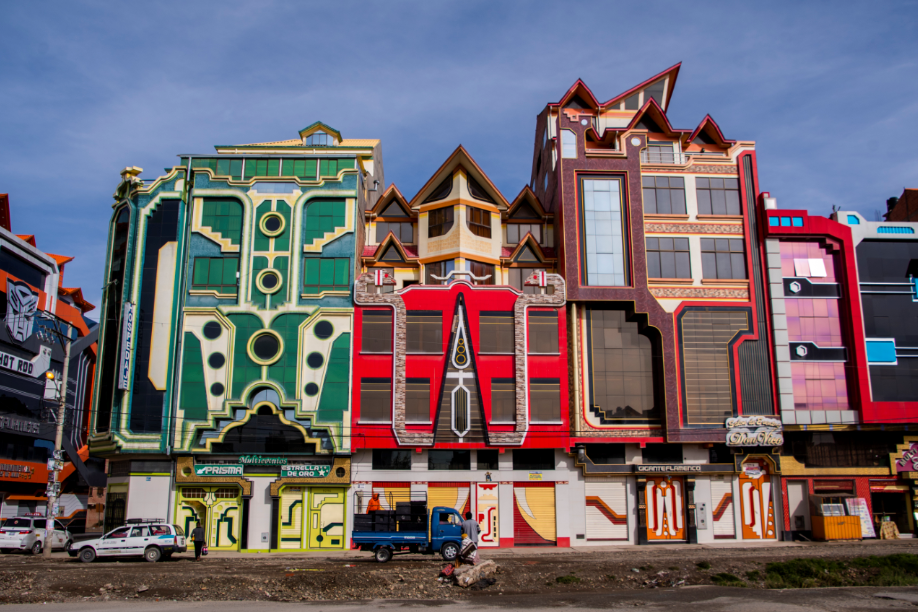FREDDY
MAMANI
Courtesy of the artist
Photo credit:Carlos Fiengo Pericon

Freddy Mamani is a Bolivian architect who has built more than 100 Neo-Andean constructions, mainly in the city of El Alto above La Paz. Inspired by his Aymara Indigenous culture, he has developed a unique, colourful, highly ornamented architecture and a new typology called the cholet. The term derives from “cholo,” a loosely de fned Spanish term considered derogatory in some contexts and empowering in others, it refers to people of both European and Indigenous heritage in Latin America.
The structure, a mixture of concrete and brick flling, is thought out in advance, and the frst part built is monochrome. Once on the building site, Mamani and the workers draw colourful decorative elements, representing the nuanced patterns of Andean cultures. The ornamentation of the façades can be found in the interior, especially in the ballroom, which is the “brand image” of the building. It delivers an atypical, cultural, but no less functional architecture for a new social group of Aymara elites, who have the fnancial resources to build these cholets.
Neo-Andean architecture largely emerged during the presidency of Evo Morales, who was Bolivia’s frst Indigenous leader in the country’s 200 year history. It can be seen as a consequence of both his economic policies, which empowered a generation of Aymara businesspeople, and of the sense of pride he instilled in the country’s Indigenous majority.
Each building is di ferent in the design of its facade, the architecture of the cholet, and the patterns and colours used inside and outside. However, the scheme, including its distribution by levels and their use remain the same. For this reason, some architects choose not to recognize Mamani as an architect but rather as a decorator. These criticisms are often a pretext for disregarding contemporary architecture that highlights Indigenous people who have reached a new social status. While Neo-Andean architecture has been developed by Mamani, it has become an inspiration for many other buildings in Bolivia, spreading a style that boldly a frms the new place of the Indigenous people in Bolivian society.

Location Map

Designed & Developed by: Curves n' Colors | Visual identity by: Wkshps
